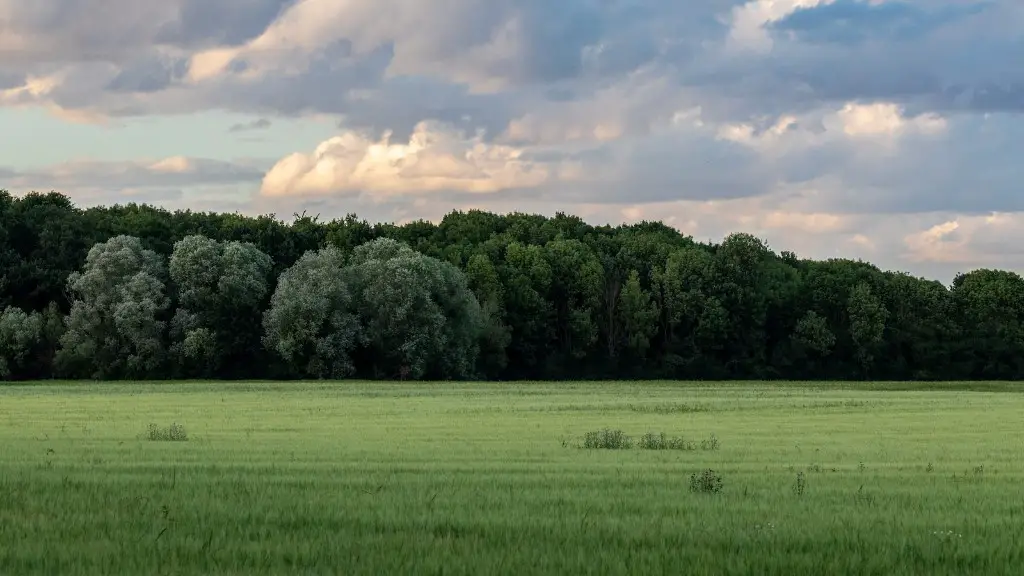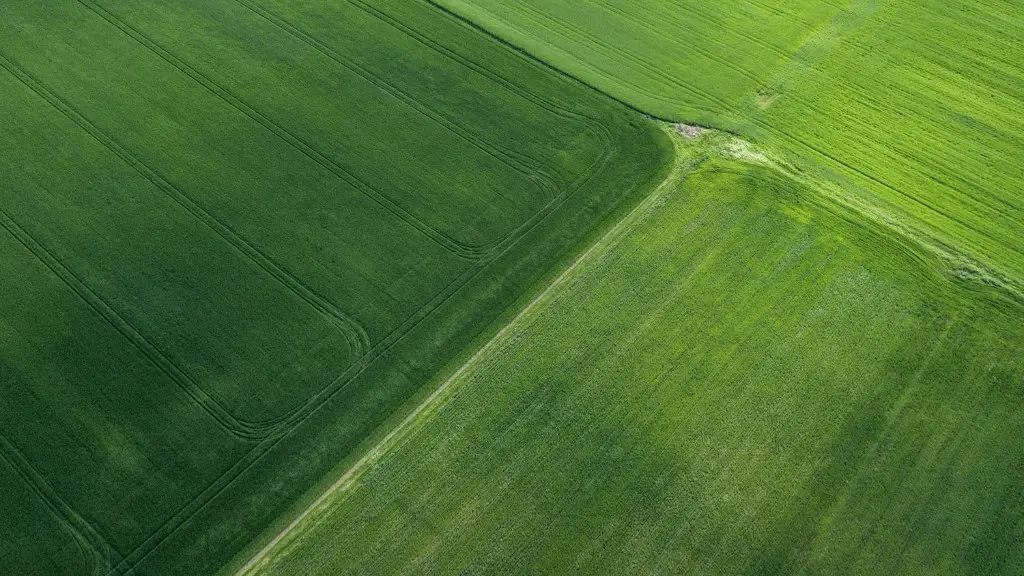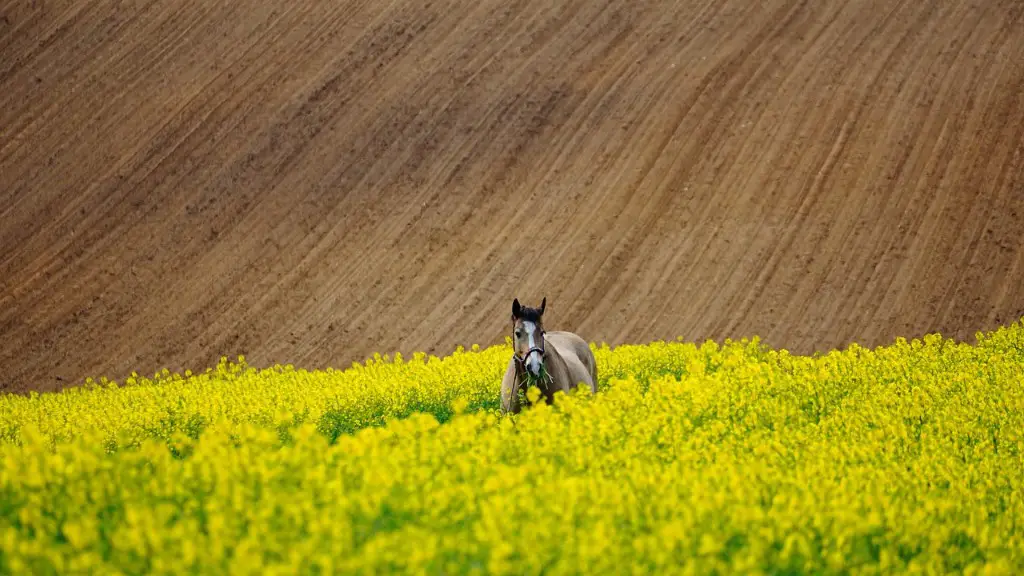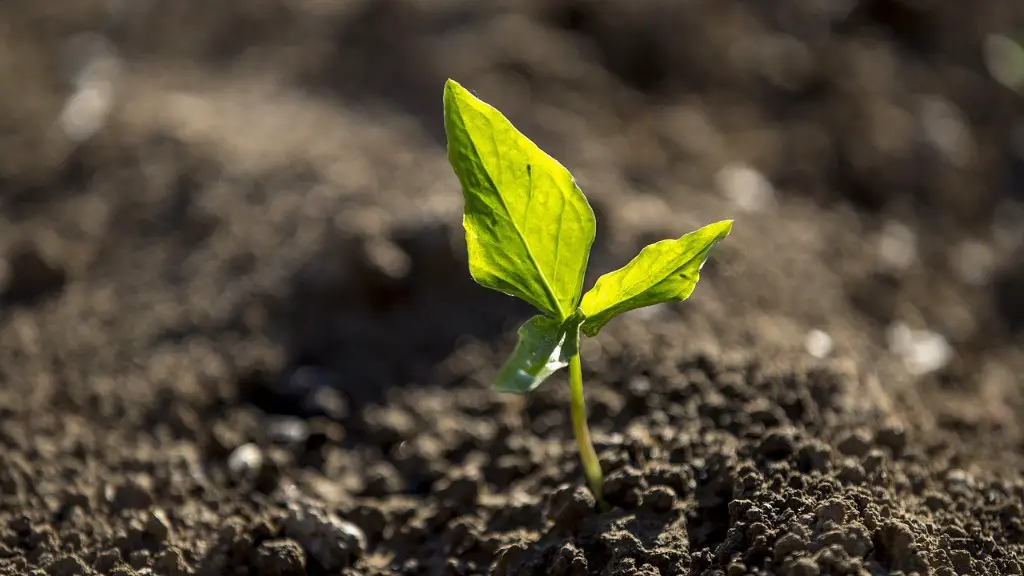It is no secret that agriculture has a significant impact on the environment. Just think about all of the water and chemicals that are used to grow crops and raise livestock. Then there is the issue of deforestation, as farmers clear land to make way for fields and grazing pastures. Add to that the carbon footprint of farming equipment and livestock, and it’s easy to see how agriculture can be a major contributor to climate change.
But it’s not all doom and gloom. There are things that farmers and ranchers can do to reduce the environmental impact of their operations. For example, they can implement practices that help conserve water and improve soil health. They can also adopt alternative farming methods, such as using cover crops and no-tillage techniques. And, of course, they can invest in renewable energy sources to power their operations.
By taking these steps, farmers can play a key role in protecting the environment and ensuring the long-term sustainability of agriculture.
We can reduce the environmental impact of agriculture by using more sustainable practices, such as crop rotation, organic farming, and using less water.
How can we make agriculture more eco friendly?
There are a number of ways that farms can be more environmentally friendly. One way is to reduce soil tillage which helps to preserve the soil structure and improve water absorption. Another way is to rotate crops which helps to improve soil health. Additionally, using low-pressure irrigation and planting cover crops can help to conserve water and reduce soil erosion. Finally, disposing of outdated pesticides and recycling plastics can help to reduce pollution and protect the environment.
Sustainable agriculture practices are those that protect and improve the natural resources upon which agriculture depends—soil, water, and air—while still providing the food and fiber we need.
There are many different sustainable agriculture practices, but some of the most common include:
Rotating crops and embracing diversity: Crop rotation—planting different crops in different years—can help improve soil health and reduce the need for synthetic inputs like pesticides and fertilizers. Embracing crop diversity can also help reduce the risk of crop failure due to pests or disease.
Planting cover crops and perennials: Cover crops are plants that are grown to protect and improve the soil. They can help reduce erosion, improve soil health, and suppress weeds. Perennial crops, like fruits and nuts, can also provide many of these benefits and can be harvested year after year.
Reducing or eliminating tillage: Tillage is the process of turning over the soil to prepare it for planting. Unfortunately, it can also lead to soil erosion and compacted soils. Reducing or eliminating tillage can help improve soil health and reduce the need for inputs like fertilizers.
Applying integrated pest management (IPM): IPM is a approach to managing
What is the most environmentally friendly agriculture practice
Organic farming is a type of agriculture that relies on natural processes, rather than the use of synthetic inputs, to promote crop growth and manage soil health. Proponents of organic farming believe that it is a more environmentally sustainable and healthful approach to food production than conventional farming practices.
Fairtrade is an international certification system that sets standards for how products are produced. To sell Fairtrade products, farmers have to improve soil and water quality, manage pests, avoid using harmful chemicals, manage waste, reduce their greenhouse gas emissions and protect biodiversity. These standards help to ensure that farmers are paid a fair price for their products, and that they are able to improve their livelihoods and support their families.
What are 3 ways that are suggested to reduce emissions from agriculture?
There are a number of ways to reduce the amount of pollution caused by agriculture. These activities may include shifting to conservation tillage, reducing the amount of nitrogen fertilizer applied to crops, changing livestock and manure management practices, and planting trees or grass. By taking these measures, we can help to protect our environment and preserve our natural resources.
There are a number of ways that farmers can fight climate change, including:
1. Efficient irrigation management – using irrigation systems that are water-efficient can help to reduce water usage and lower greenhouse gas emissions.
2. Renewable energy – using renewable energy sources such as solar and wind power can help to reduce reliance on fossil fuels.
3. Organic practices – using organic farming practices can help to reduce emissions of greenhouse gases.
4. Increasing soil health – healthy soils can help to sequester carbon, which can help to offset greenhouse gas emissions.
5. Keeping agriculture green – using sustainable agricultural practices can help to keep farmers productive while also reducing emissions.
6. Reducing livestock methane emissions – livestock are a major source of methane emissions, so reducing these emissions can have a significant impact.
7. Pasture-based livestock management – managed grazing can help to reduce methane emissions from livestock while also providing other benefits.
8. Protecting farmland – farmland is a valuable resource that can help to sequester carbon and provide other environmental benefits.
9. Supporting research and development – investing in research and development of new technologies can help to reduce the impact of agriculture on the environment.
10
What are the five main environmental impacts of agriculture?
Agriculture has had a profound effect on the environment. Five of the most significant environmental effects of agriculture are soil fertility loss, eutrophication of water bodies, deforestation, climate change and pesticide pollution.
Soil fertility loss is perhaps the most serious environmental effect of agriculture. It results from the depletion of nutrients in the soil due to cropping, which can lead to a decline in crop yields. Eutrophication of water bodies occurs when excess nutrients from agricultural runoff enter lakes and rivers, causing an increase in algae growth. This can lead to the depletion of oxygen in the water, adversely affecting aquatic life. Deforestation is another major environmental effect of agriculture. It results from the clearing of land for farming, which can lead to soil erosion and climate change. Pesticide pollution is another serious environmental effect of agriculture. It occurs when pesticides used in agriculture leach into water bodies and contaminate them, posing a threat to human health and the environment.
You can help the environment by reducing your energy consumption, recycling old technology, conserving resources, and doing some gardening. Another way to help is to eat vegetarian meals one day a week. When grocery shopping, choose to buy in season and avoid packaging. When traveling, consider using public transportation or carpooling.
What are 3 types of sustainable agriculture
Methods and practices that help make agriculture more sustainable are becoming increasingly important as we face challenges like climate change and dwindling natural resources. Permaculture, biodynamic farming, hydroponics and aquaponics, urban agriculture, and agroforestry are all methods that can help make agriculture more sustainable. Each has its own advantages and disadvantages, so it’s important to choose the right one for your situation. Permaculture, for instance, is great for creating self-sustaining ecosystems, while urban agriculture can make use of limited space to produce food.
The principle of sustainable agriculture is to cover the human needs for food without damage to the environment. It is based on an ecological approach that takes into account the relationships between plants, animals and their environment.
What are 3 effects of agriculture on the environment?
Large-scale, conventional farming is not sustainable in the long term. It contributes to climate change, pollutes air and water, and depletes soil fertility. We need to find more sustainable ways of farming that will not have such negative impacts on the environment.
The best way to reduce waste is to not produce it in the first place. This can be done by buying fewer products and purchasing products that are built to last or are easily repaired. Recycling is also a great way to reduce waste. This entails sorting different types of waste into recycle bins so that they can be processed and used as raw materials for other industries.
How can we reduce air pollution in agriculture
Fossil fuels are an important part of our lives and we need to use them efficiently to help reduce our impact on the environment. There are a few things we can do to help use them more efficiently:
Reduce heat loss: Make sure your home or office is well insulated and that you’re not wasting heat.
Use alternative energy sources: Solar, wind and hydro power are all great alternatives to using fossil fuels.
Use fertilisers efficiently: Make sure you’re using the right amount of fertiliser and that it’s being used effectively.
Protect the natural environment: Avoid using pesticides and herbicides, and try to preserve natural habitats.
Nitrous oxide: Refrigeration equipment emits nitrous oxide, so make sure it’s well maintained and that you dispose of it properly.
Manage animal diets carefully: What your animals eat can have an impact on methane emissions, so be mindful of their diets.
The environmental impact of agriculture is the effect that different farming practices have on the ecosystems around them, and how those effects can be traced back to those practices. The environmental impact of agriculture varies widely based on practices employed by farmers and by the scale of practice.
Different farming practices can have harmful or beneficial effects on the environment. For example, industrial agriculture is often blamed for causing soil erosion and water pollution, while organic farming is often lauded for its sustainability. The key is to find practices that minimize negative impact and maximize positive impact.
At the same time, it’s important to remember that the environmental impact of agriculture is not just about the impact on the ecosystems around farms. It’s also about the impact of food production on the planet as a whole. For example, the livestock sector is responsible for a significant portion of greenhouse gas emissions. So, when considering the environmental impact of agriculture, it’s important to look at the big picture.
What are the 5 biggest environmental problems caused by food and agriculture?
There are many environmental problems that can arise from food production, including water use and water pollution, greenhouse gas emissions, environmental contaminants and pollutants, depletion of natural resources, and waste. To help mitigate these problems, some grocery stores are beginning to adopt eco-friendly practices, such as using less plastic and reducing food waste.
Agricultural livestock are responsible for a large proportion of global greenhouse gas emissions, most notably methane. In addition, overgrazing is a major problem regarding environmental sustainability. In some places, stretches of forage land are consumed so extensively that grasses are unable to regenerate.
Final Words
There are many ways to reduce the environmental impact of agriculture. One way is to use more efficient irrigation systems that use less water. Another way is to use more organic methods of farming that rely on natural resources instead of synthetic fertilizers and pesticides.
Agriculture is a major contributor to environmental problems. However, it is also possible to reduce the environmental impact of agriculture. Some ways to do this include reducing tillage, using cover crops, and keeping crop residues on the field. Other methods include using organic fertilizers and manure, and planting trees and hedges to provide windbreaks and wildlife habitat.





